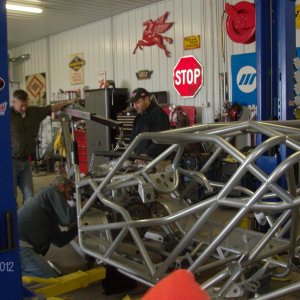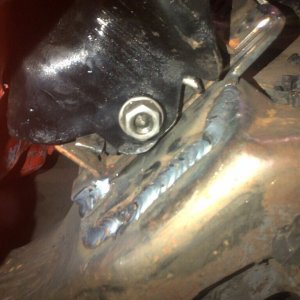Dear chickenwing;
Before decision is to be made on using dual batteries or a higher output alternator, first we must examine both and then ascertain which application would be best suited to your needs.
First, even though batteries and alternators are part of the same charging system, their functions are very different. a storage battery is exactly that, it is a battery that is capable of STORING a voltage potential.
A battery has two different output parameters, it's voltage potential and it's amperage draw (or rating). A typical modern automobile utilizes a 12V negative ground charging system, yet this does not mean that we are bound to using a single 12V battery for it.
For example, we have a single 12V battery that is capable of a 750 amp current draw and next to it is a 6V golf cart battery which is capable of a 1000 amp draw. Which of the two is more powerful? The answer is that the 6V battery is more powerful, yet because it only has the capacity for storing 6V it cannot be used in an automobile. Or, can it?
Certainly, we cannot install a 6V battery in place of a 12V battery, YET we CAN install TWO 6V batteries in parallel with each other and thus we now have in all reality a BIG 12V battery that is capable of drawing 1000 amperes!
We can also install two 12V batteries with a current draw of 750 amps each, and thus have a battery which still has a 750 amp current draw, only it's capable of drawing that 750 amps for twice as long as it could when we were using a single 12V battery.
This would become advantageous when someone is using their winch for extended periods, as twin 12V batteries permit the user to winch for longer periods of time. Of course, this is not taking into consideration the substantial amount of heat that the motor of an electric winch is generating, therefore this must also be taken into consideration, lest the winch motors burns out from extended usage.
Next, the charging system incorporates an alternator. Almost all alternators in a modern automotive charging system are 12V and they are rated by maximum current output in amperes.
In short, if your vehicle has an alternator that has an output of 100 amps, it is capable of charging the vehicle's battery twice as fast as an alternator that puts out 50 amps, and twice as long as an alternator which has a 200 amp output.
A high output alternator becomes necessary whenever a vehicle has many electrical accessories that have a high extended power demand, such as auxiliary lighting or a high output heater.
In cases such as this, a higher output alternator becomes necessary in order for the charging/shortage system to keep pace with the high amperage draw of the accessories. If a higher rater alternator were not used, the demand from the accessories would soon outstrip the alternator' capacity for producing current, thus draining the vehicle's battery in short order.
It sounds like your battery, even though fully charged, is in a weakened state. In other words, it cannot maintain it's current potential, therefore it would be advisable to check it's current draw using a battery load tester, such as the one in the provided link:
http://www.drillspot.com/products/350768/Otc_3180_Battery_Load_Tester
These handy testers are able to determine a battery's state of health by checking it's current draw. Also, it is capable of checking a battery's voltage with the engine not running and the alternator system's state of health with the engine running.
Your friend;
LAMAR









